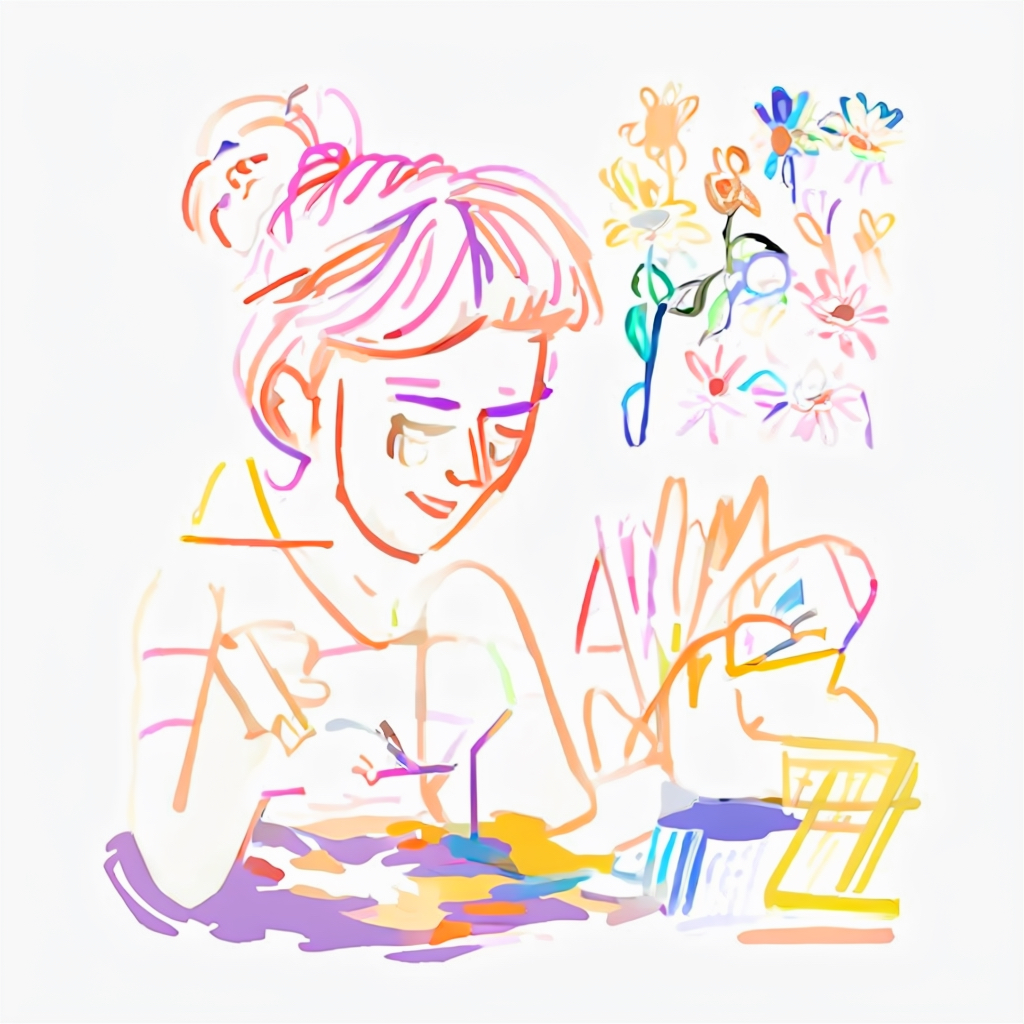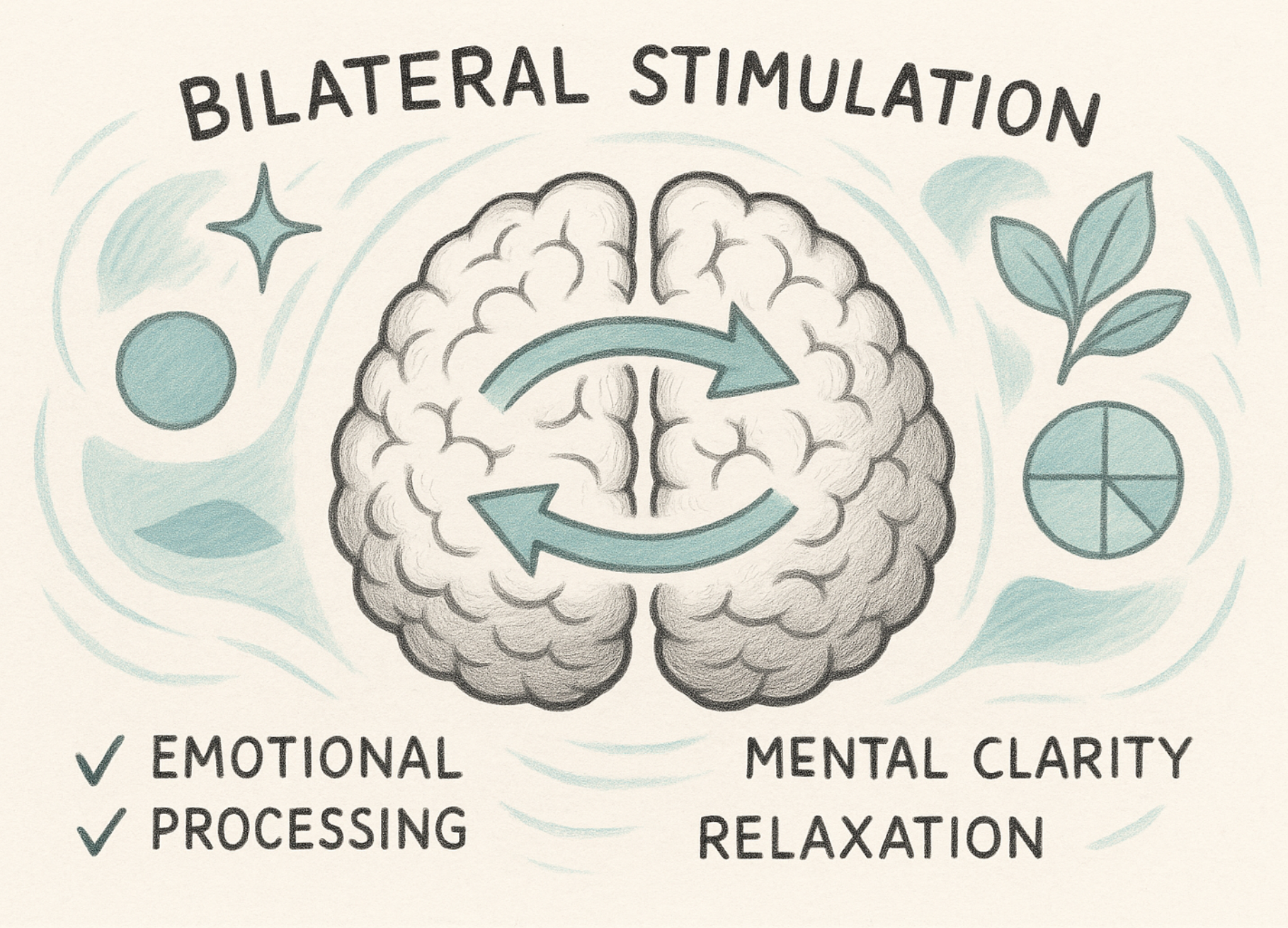
Abstract:
Art therapy, initially popularized for children, is gaining traction as an effective treatment for adults suffering from anxiety and depression. This article examines the specific application and benefits of art therapy for adults, contrasting it with its use in pediatric settings, and highlights its unique advantages and challenges.
Introduction:
While art therapy’s roots lie in child psychology, its expansion into adult mental health care reflects a growing recognition of its efficacy across age groups. This review concentrates on the therapeutic role of art for adults with anxiety and depression, emphasizing the distinct needs and outcomes in this demographic compared to children.
Application of Art Therapy for Adults:
In adults, art therapy serves as both a diagnostic tool and a method for self-exploration. Unlike children, who often engage in art therapy to enhance communication skills or cope with developmental issues, adults use it to delve deeper into complex emotional landscapes and unresolved psychological conflicts (Malchiodi, 2012). The therapeutic process involves creating art not just for expressive purposes but as a means to confront and articulate inner experiences.
Art therapy’s efficacy in treating adults with anxiety and depression is supported by a growing body of empirical evidence. For instance, a study conducted by Schouten et al. (2015) explored the impact of art therapy on adults experiencing depression. The findings revealed significant improvements in mood, with participants reporting heightened self-awareness and emotional resilience after engaging in structured art-making activities. This aligns with the broader therapeutic goal of fostering cognitive restructuring through creative expression, allowing individuals to reframe negative thought patterns and develop healthier coping mechanisms.
Moreover, a randomized controlled trial by Blomdahl et al. (2013) assessed art therapy’s role in alleviating symptoms of anxiety and depression in adults. Participants who underwent art therapy sessions showed marked reductions in anxiety levels compared to those receiving standard care alone. This suggests that the non-verbal nature of art therapy offers unique advantages for individuals who might struggle to articulate their feelings verbally. By externalizing emotions through artistic creation, adults are able to process complex emotions in a safe and contained environment, which can lead to sustained psychological benefits. These studies collectively underscore art therapy’s potential as an effective intervention for enhancing mental health among adult populations.
Benefits for Adults:
1. **Complex Emotional Processing:** Adults benefit from using art therapy to navigate intricate emotions and life experiences, providing clarity and insight that verbal therapies might not achieve (Moon, 2010).
2. **Enhanced Self-Reflection:** The reflective nature of art-making aids adults in understanding personal narratives and transforming their perceptions of anxiety and depression.
3. **Empowerment and Agency:** By fostering creativity, art therapy offers adults a sense of control and accomplishment, counteracting feelings of helplessness often associated with these disorders.
Differences from Pediatric Application:
1. **Sophistication of Themes:** Adult sessions often tackle sophisticated themes such as existential dilemmas, identity, and relationship dynamics, whereas children’s art therapy may focus more on developmental milestones and social behavior.
2. **Therapeutic Goals:** For adults, goals are frequently centered on introspection and life re-evaluation, while for children, they might include improving communication and behavioral regulation.
3. **Cognitive Engagement:** Adults are typically more equipped to engage in meta-cognitive reflection about their creative process, making sessions potentially more analytically driven.
Challenges in Adult Art Therapy:
1. **Preconceived Notions:** Adults may enter therapy with preconceived notions about art, including self-imposed limitations stemming from past experiences or perceived lack of skill.
2. **Resistance to Non-Verbal Methods:** Some adults prefer conventional talk therapy, viewing non-verbal approaches as less serious or effective. It requires skilled facilitation to demonstrate the value of this modality.
3. **Outcome Measurement:** As with children, quantifying outcomes remains a challenge, necessitating ongoing research and development of standardized evaluation tools.
Conclusion:
Art therapy offers adult individuals a profound and multifaceted approach to managing anxiety and depression. While sharing core principles with pediatric applications, its adaptation for adults addresses particular psychological complexities and needs. Continued exploration and validation of its methods will further enhance its integration into adult mental health care practices.
References:
– Malchiodi, C. A. (Ed.). (2012). Handbook of Art Therapy. Guilford Press.
– Moon, B. L. (2010). Art-Based Group Therapy: Theory and Practice. Charles C Thomas Publisher.
– Schouten, K. A., et al. (2015). From protocol to publication: A study on art therapy in the treatment of depression. Arts & Health, 7(1), 23-39.
– Schouten, K. A., de Niet, G. J., Knipscheer, J. W., Kleber, R. J., & Hutschemaekers, G. J. M. (2015). The effectiveness of art therapy in the treatment of traumatized adults: A systematic review on art therapy and trauma. Trauma, Violence, & Abuse, 16(2), 220-228.
Blomdahl, C., Gunnarsson, A. B., Guregård, S., & Rusner, M. (2013). A realist review of art therapy for clients with depression. Arts & Health, 5(1), 40-53.




Leave a Reply